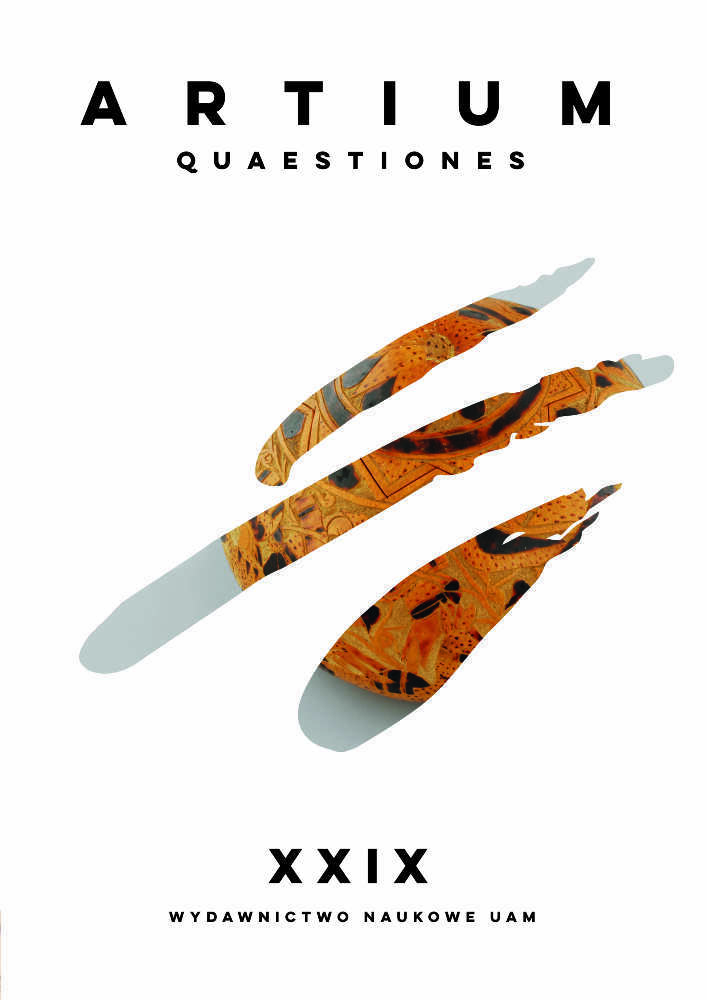Abstract
The paper is an attempt to draw the reader’s attention to visual reproduction as an element of modern artistic discourses and a medium of the mediated reception of art. An instrumental approach to reproduction as a neutral and ancillary vehicle of meaning, prevalent in the age of modernism, corresponded to the belief in its information efficacy and ability to overcome material, physical limitations. What mattered most were not the material, physical aspects of the existence and circulation of images, even though the avant-garde artists of the 1920s, using contemporary technology, were aware how important the medium’s and its distribution range’s “impact” was. L’Esprit Nouveau, a periodical edited in 1920-1925 by Amédée Ozenfant and Le Corbusier, was an example of a successful avant-garde strategy which let both editors, marginal in the field of art, achieve the status of “leaders” of the modernist movement, recognized or at least carefully watched by artists and critics abroad. Next to other factors, important was the visual aspect of the magazine, praised for many impressive, modern illustrations, often reproduced in other avant-garde publications. The author analyzes visual resources used and reproduced in L’Esprit Nouveau, referring to the postulates of “objectivism” and “thingness”, endorsed by the periodical, and considering the part that “ready-made” images, found in the daily press and commercial catalogues as well as on postcards. played in Le Corbusier’s polemical and programmatic texts. Their strongly persuasive message was often rooted in montage and quotations which stressed its heterogeneity. In terms of composition and aesthetics, the reproduced images supported the aesthetics of transparency, order, and thingness, so characteristic of L’Esprit Nouveau. The emblems of modernity emerged from the movement of anonymous images which acquired the value of symbols.
Ozenfant’s and Le Corbusier’s use of images borrowed from popular culture, as well as from albums and art books, makes one consider not only their rhetorical effectiveness, but also their role in the creative process and thinking. In Le Corbusier’s artistic practice, those easily available, miniaturized images were a common instrument enhancing his visual, aesthetic approach. Such an approach, according to Georg Simmel, seems to be characteristic of the modernist attitude to the material world that consisted in subjective distance combined with the apparently opposite desire to “go back to things” by making them more concrete and closer to the senses.
References
Artyści o sztuce. Od van Gogha do Picassa, red. E. Grabska, H. Morawska, Warszawa 1969
Banham R., Rewolucja w architekturze. Teoria i projektowanie w „pierwszym wieku maszyny”, tłum. Z. Drzewiecki, Warszawa 1979
Bergstein M., Lonely Afrodites. On the Documentary Photography of Sculpture, „Art Bulletin” 1992, 3, s. 475–498
Bergstein M., Mirrors of Memory. Freud, Photography and the History of Art, New York 2010
Bergstein M., In Looking Back One Learns to See. Marcel Proust and Photography, Amsterdam–New York 2014
Collignon M., L’Acropole d’Athènes, Paris 1912
Collignon M., Le Parthénon. L’histoire, l’architecture et la sculpture, Paris 1914
Colomina B., Privacy and Publicity. Modern Architecture as Mass Media, Cambridge, Mass., London 1996
Desbiolles Y.-Ch., Revues d’art à Paris 1905–1940, Aix-en-Provence 2014
Didi-Huberman G., Przed obrazem. Pytanie o cele historii sztuki, tłum. B. Brzezicka, Gdańsk 2011
Heller S., From Merz to Emigré and Beyond. Avant-Garde Magazine Design of the XXth Century, New York 2014
Kassák L., L. Moholy-Nagy, Buch neuer Künstler, Wien 1922
Kossakowska M., Teoria awangardy francuskiej. Puryzm i jego twórcy, Warszawa–Wrocław 1980
Le Corbusier, L’Art décoratif d’aujourd’hui, Paris 1980
Le Corbusier, W stronę architektury, tłum. T. Swoboda, wstęp M. Leśniakowska, Warszawa 2012
Le Corbusier, Urbanistyka, tłum. T. Swoboda, Warszawa 2015
Le Corbusier à la Bibliothèque Nationale, red. Ph. Duboy, Paris 1985
Le Corbusier. La passion des cartes, red. L.B. Bielza, Bruxelles 2013
Le Corbusier. Oeuvre plastique 1919–1937. Tableaux et architecture, red. S. Giedion, Zurich 1938
Léger F., Funkcje malarstwa, tłum. J. Guze, Warszawa 1970
L’Esprit Nouveau. Le Corbusier et l’Industrie 1920–1925, red. S. de Moos, Zurich 1987
L’Esprit Nouveau. Purism in Paris, 1918–1925, red. C. Eliel, Los Angeles 2001
Loos A., Ornament i zbrodnia. Eseje wybrane, tłum. A. Stępnikowska-Bens, Warszawa 2013
Mazzucco K., Mnemosyne. Bilderdemonstration, Bilderreihen, Bilderatlas. Chronologiczna prezentacja dokumentów związanych z Atlasem Warburga, tłum. M. Salwa, „Konteksty. Polska Sztuka Ludowa” 2011, 2–3, s. 120–142
Między sztuką a komuną. Teksty awangardy rosyjskiej 1910–1932, red. A. Turowski, Kraków 1998
Olsen B., W obronie rzeczy. Archeologia i ontologia przedmiotów, tłum. B. Shallcross, Warszawa 2013
Ozenfant A., Art. Bilan des arts modernes en France, structure d’un nouvel esprit, Paris 1968
Ozenfant A., Ch. Jeanneret, La Peinture Moderne, Paris 1925
Panofsky E., Original and facsimile reproduction, tłum. T. Grundy, „RES. Anthropology and Aesthetics” 2010, 57–58, s. 330–338
Photo Archives and the Photographic Memory of Art History, red. C. Caraffa, Berlin 2011
Photography in the Modern Era. European Documents and Critical Writings, 1913–1940, red. Ch. Phillips, New York 1989
Preziosi D., Rethinking Art History. Meditations on a Coy Science, New Haven–London 1989
Przyboś J., Rzeczy które mówią o nowym człowieku, „Zwrotnica” 1926, 8, s. 210–211
Richards S., Le Corbusier and the concept of self, New Haven–London 2003
Simmel G., Most i drzwi. Wybór esejów, tłum. M. Łukasiewicz, Warszawa 2006
Vešč – Objet – Gegenstand, oprac. R. Nachtigäller, H. Gassner, Baden 1994
Wójtowicz A., Nowa sztuka. Początki (i końce), Kraków 2017
License
The copyrights are regulated by author's statement and publication agreement prepared by Adam Mickiewicz University Press. The authors are responsible for the originality of texts published and regulating the copyrights of accompanying visual materials, unless the materials come from the Editorial Team.
This work is available with the following licence: Attribution-NonCommercial-NoDerivatives 4.0 International License
Attribution-NonCommercial-NoDerivatives 4.0 International License

